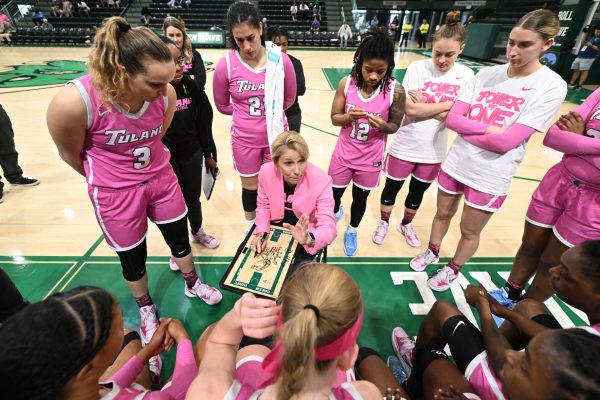Addressing gun violence requires investment in comprehensive, holistic solutions
March 11, 2015
The following is an opinion article and opinion articles do not reflect the views of The Tulane Hullabaloo.
One woman was killed and another was injured in a shooting early Tuesday morning just two blocks from Jefferson Avenue and one block off Freret Street on the 5100 block of South Robertson Street. Police arrested three men after they fired guns and pointed them at Tulane students a week before at the corner of Freret Broadway streets. While the two incidents do not appear to be related, they are chilling reminders that New Orleans wages a daily battle with gun violence, most often outside of the confines of the Uptown area.
According to a Jan. 2013 article in The Atlantic, New Orleans saw a gun-homicide rate of 62 per 100,000 in 2012, a rate that rivaled the world’s deadliest country for gun violence: Honduras. While much of the national attention has been on Chicago, with the media labeling the city “Chiraq,” the reality is New Orleans has consistently seen a murder rate that far exceeds Chicago’s. Despite the fact that 2013 and 2014 saw the total number of murders in the city drop, the shooting Tuesday morning was another incident in an already violent year in the city, marking the fifth murder in four days and the 33rd in the first two-and-a-half months of 2015.
As the documentary “Shell Shocked” explores, there is rarely a child outside of Uptown in New Orleans who has not been touched by gun violence in a personal way. One of the faces of the gun violence epidemic in New Orleans is Ka’Nard Allen. Allen was the youngest person injured during a shooting at a Mother’s Day second line parade in 2013, which injured 19 people. Allen was also injured in a 2012 drive-by shooting at his birthday party in Central City that left his five-year-old cousin, Briana Allen, dead. Further, while Allen was recovering from the first shooting, his father was murdered in a domestic dispute.
Allen’s experience and the experiences of the 150 other families who lost a member of their family in 2014 are the reason that gun violence and murder have been called “the city’s greatest neglected crisis.”
Mayor Mitch Landrieu launched his “NOLA for Life” campaign, a murder reduction strategy in New Orleans, in 2012. While the campaign has had an impact in the community it focuses on, a segment of Central City, the current scale of the campaign isn’t near large enough to combat the crisis facing the city.
One of the most important pillars of “NOLA for Life” is to promote jobs and opportunities. Yet, the job opportunities the campaign promotes can be broken down into two categories: unskilled and low-paying, or highly-skilled and unattainable. For the strategy to work, the city must create private-public partnerships with companies and nonprofits working in New Orleans. There must be an investment made in individuals in gun violence-prone and disenfranchised communities. The city must be willing to implement creative initiatives that addresses the underlying issues of violence such as poverty, health care, incarceration and education.
If the city continues to promote unattainable jobs or unlivable wages and refuses to initiate holistic solutions, then “NOLA for Life” won’t stop another child from having an experience similar to Ka’Nard Allen’s.
Brendan Lyman is a senior at Newcomb-Tulane College. He can be reached at [email protected]





















Leave a Comment